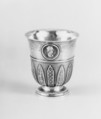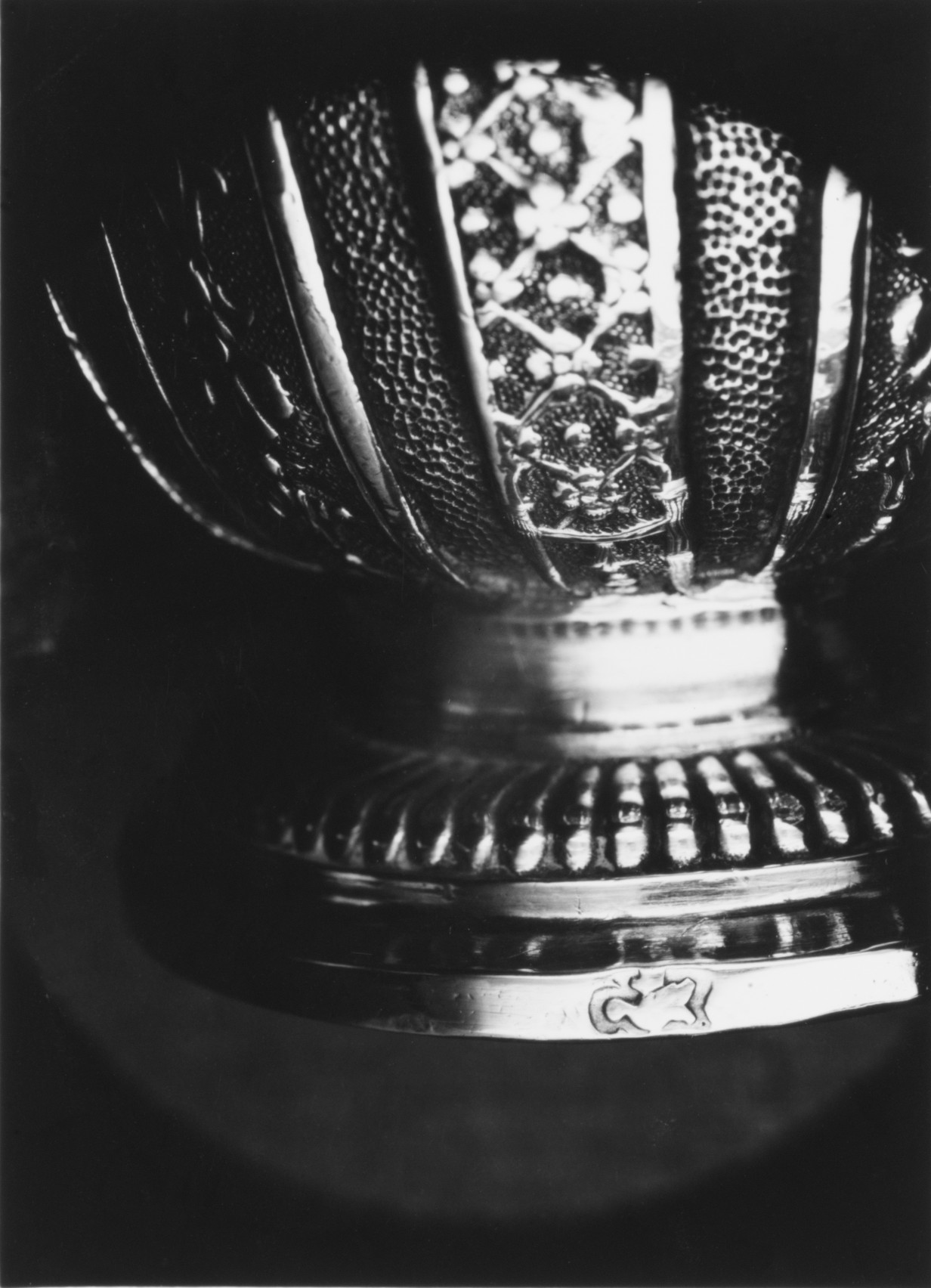Beaker (one of a pair)
Probably Jacques Filassier
Not on view
During the later seventeenth and early eighteenth-century, the silver toilet set evolved into one of the most fashionable luxury accessories and was an eloquent symbol of the owner’s status.
To ensure timely delivery, it was common practice for toilet sets to be made by several silversmiths, subcontracted by a merchant or a master silversmith. Each silversmith would receive designs but may also have drawn on his reserves and applied decorative details and engravings to existing items in order to conform with other objects in the set.
Supplied by a number of Parisian silversmiths during the 1720s, several other items (48.187.21, .22, .269, .325) in the Wentworth collection may originally have been part of a large toilet set which included this pair of beakers.
This pair of beakers was part of the collection of silver bequeathed to the museum in 1948 by Catherine D. Wentworth (1865-1948). Mrs. Wentworth was the daughter of one of the founders of the Weyerhaeuser Timber Company. She was an art student who lived in France for thirty years and one of the most important American collectors of eighteenth-century French silver. Part of her significant holdings, which included snuffboxes, French furniture and textiles as well, were left to the Metropolitan Museum. The collection is particularly strong in domestic silver, much of it provincial, and includes a number of rare early pieces.
Due to rights restrictions, this image cannot be enlarged, viewed at full screen, or downloaded.
This artwork is meant to be viewed from right to left. Scroll left to view more.




